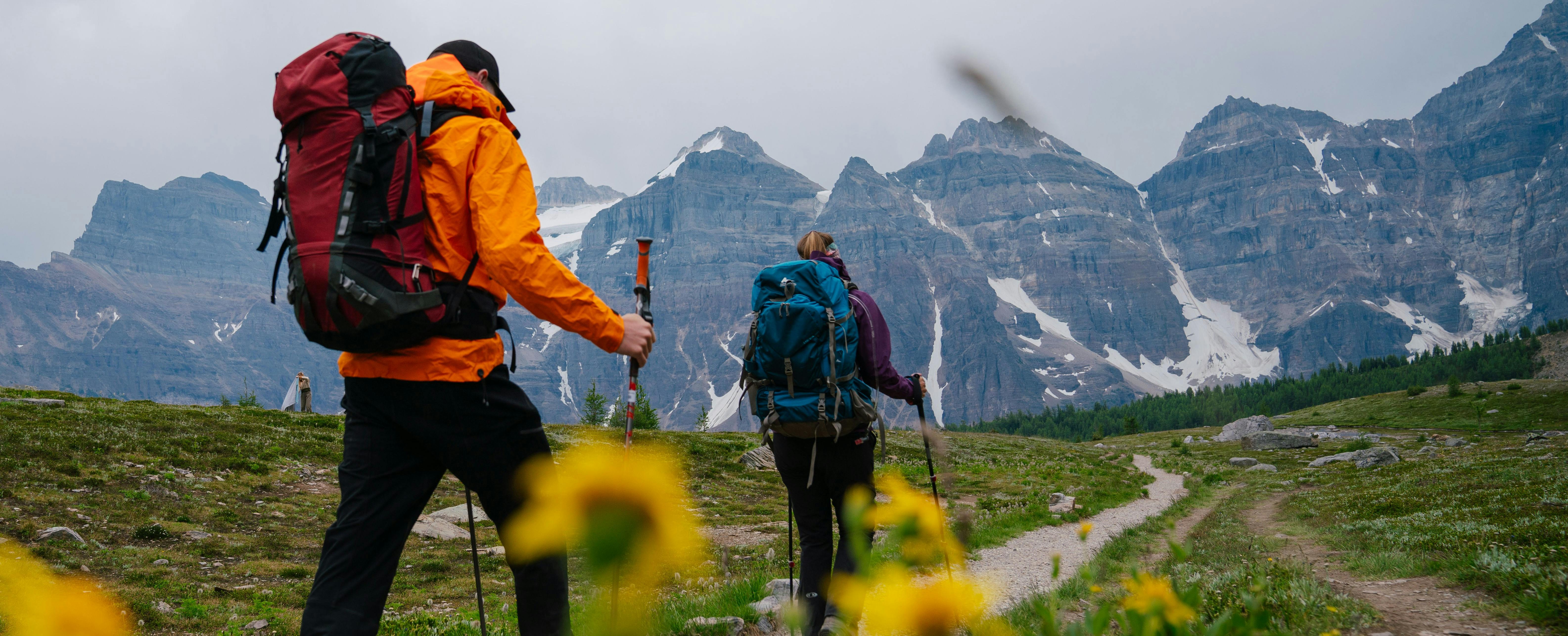FAQs
- Providing trip planning information and education programs such as Leave No Trace to manage expectations and encourage responsible visitor behaviour.
- Making improvements to trails, parking lots, and other infrastructure to respond to increasing use.
- Establishing reservation systems, shuttles, and permit requirements to regulate use.
What is visitor use management?
Visitor use management is a proactive and adaptive process for developing strategies to ensure that recreation in protected areas is managed in a way that is sustainable.
Visitor use management considers the type, timing, amount and distribution of visitor activities and behaviours. It is founded on desired conditions, or what we are trying to achieve, for visitor experiences and opportunities, for natural and cultural resources and for facilities and services.
Strategically managing visitor use helps Parks Canada provide meaningful opportunities for visitors to discover and connect with nature and history while protecting natural and cultural resources – the very things that draw so many visitors to special and iconic destinations
Why is Visitor Use Management planning needed?
Visitation to Banff National Park has grown 31% over the last decade. The 2023-24 season was the busiest on record and visitation is expected to continue to rise. Rising visitation at Lake Louise and Moraine Lake impacts visitor experience, safety and ecological integrity.
Parks Canada is creating visitor use management plans to ensure visitation is sustainable.
The Lake Louise area hosts between 10,000 to 12,000 visitors on an average summer day. The Lake Louise parking lot is typically full between 8 am to 6 pm daily, though many visitors still attempt to access Upper Lake Louise in a personal vehicle. Of these, an estimated 50% are turned away. During peak periods, this number rises to 85%. In the past, these visitors were able to obtain last minute shuttle tickets, but this is no longer possible due to high demand.
Moraine Lake Road was closed to personal vehicles in 2023. Prior to that time, approximately 5000 vehicles were turned away per day, compared to the 700 to 900 vehicles that were able to secure parking. The parking lot at Moraine Lake was regularly full by 3 am and Moraine Lake Road required 24-hour traffic control.
Parks Canada has been implementing strategies to manage traffic congestion in the Lake Louise area for over a decade. Strategies include shuttles, reservations, paid parking, traffic control, congestion thresholds and traffic flushing protocols, and collaborative communication campaigns with regional stakeholders. These strategies have successfully reduced traffic volumes by 23% since their peak in 2019 while accommodating more visitors than ever.
However, as shuttles fill up faster, access challenges continue to cause frustration and conflict, crowds impact the cleanliness and condition of facilities, vehicle and pedestrian traffic in wildlife corridors affects grizzly bear habitat, and congestion impedes emergency vehicle access and evacuation routes.
Parks Canada must undertake visitor use management planning for the Lake Louise area to identify proactive and holistic strategies that will ensure visitation is sustainable long-term. This objective is identified in the Banff National Park Management Plan and aligned with the recommendations of the Expert Panel on Moving People Sustainably in the Bow Valley
How can I get involved?
The first phase of consultation on visitor use management planning for Lake Louise is now complete. This phase collected input on desired conditions and aspirations for the Lake Louise area.
The next phase of consultation will focus on strategies and actions, or how to achieve the desired conditions. The next phase of consultation is anticipated to take place in spring 2025.
The Lake Louise Area Visitor Use Management Plan should be complete in 2025 and will guide visitor use management in the Lake Louise area for the next 5 to 7 years. Plans are adaptive and iterative changes may be made over time.
What are "desired conditions"?
Desired conditions are aspirational statements about what a place aims to achieve or maintain for visitor experiences and opportunities, for natural and cultural resources and for facilities and services.
Desired condition statements are forward thinking. They describe how a place should look, sound feel and function, while considering the operational and financial context of an area. Desired conditions reflect the purpose and goals of a particular area, as outlined in guiding legislation and documents, and provide an important foundation for guiding visitor use management decisions.
What are some examples of "strategies and actions"?
Many visitor use management strategies and actions may be familiar to visitors to Parks Canada administered sites. Examples include:
Visitor use management strategies and actions may be subtle or more direct. They aim to manage where visitors go, how and when they visit, the number of visitors in an area, the activities they engage in, the type and characteristics of supporting infrastructure, and ways to ensure responsible visitor behaviour.
In managing visitor use, a suite of strategies and actions is often needed. There is no one tool that can solve complex visitation challenges. Visitor use management takes into consideration the local context and strives to provide tailored solutions.
Parks Canada will continue to consider a range of strategies and actions to manage visitor use to ensure that we can continue to provide high-quality experiences for visitors while ensuring ecological and commemorative integrity.
